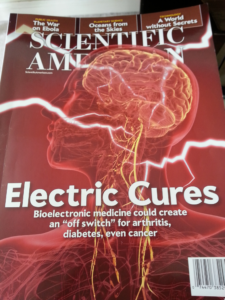Transcutaneous Electrical Acustimulation Combined with Deep Breathing Relieves GERD via the Autonomic Nervous System: HRV study
Kristen Sparrow • September 12, 2019

 2019 Aug;22(6):751-757. doi: 10.1111/ner.13021. Epub 2019 Jul 26.
2019 Aug;22(6):751-757. doi: 10.1111/ner.13021. Epub 2019 Jul 26.Ameliorating Effects of Transcutaneous Electrical Acustimulation Combined With Deep Breathing Training on Refractory Gastroesophageal Reflux Disease Mediated via the Autonomic Pathway.
Author information
- 1
- Department of Gastroenterology, The First Affiliated Hospital of USTC, Division of Life Sciences and Medicine, University of Science and Technology of China, Hefei, Anhui, China.
- 2
- Division of Gastroenterology and Hepatology, Johns Hopkins University, Baltimore, MA, USA.
Abstract
AIMS:
To investigate the effects and possible mechanisms of transcutaneous electrical acustimulation (TEA) combined with deep breathing training (DBT) on refractory gastroesophageal reflux disease (rGERD).
METHODS:
Twenty-one patients with rGERD were recruited and randomly assigned to receive either only esomeprazole (ESO, 20 mg bid) (group A, n = 7), TEA + DBT + ESO (group B, n = 7), or sham-TEA + DBT + ESO (group C, n = 7) in a four-week study. The reflux diagnostic questionnaire (RDQ) score and heart rate variability (HRV) were recorded and evaluated at baseline and at the end of each treatment. Blood samples were collected for the measurement of serum acetylcholine (Ach) and nitric oxide (NO). Esophageal manometry and 24-hour pH monitoring were performed before and after the treatment.
RESULTS:
After treatment, 1) the participants in group B had significantly lower scores of RDQ and DeMeester and increased lower esophageal sphincter pressure (LESP) than those in group C (all p < 0.05), suggesting the role of TEA; 2) low frequency band (LF)/(LF + HF) ratio in groups B and C was decreased, compared with group A (p = 0.010, p = 0.042, respectively); high frequency band (HF)/(LF + HF) ratio in B and C groups was significantly increased, compared with group A (p = 0.010, p = 0.042, respectively); 3) The serum Ach in groups B and C was significantly higher than group A (p = 0.022, p = 0.046, respectively); the serum NO in groups B and C was significantly lower than group A (p = 0.010, p = 0.027, respectively).
CONCLUSIONS:
TEA combined with the DBT can effectively improve the reflux symptoms in rGERD patients by increasing LESP and reducing gastroesophageal reflux, which may be mediated via the autonomic and enteric mechanisms.

